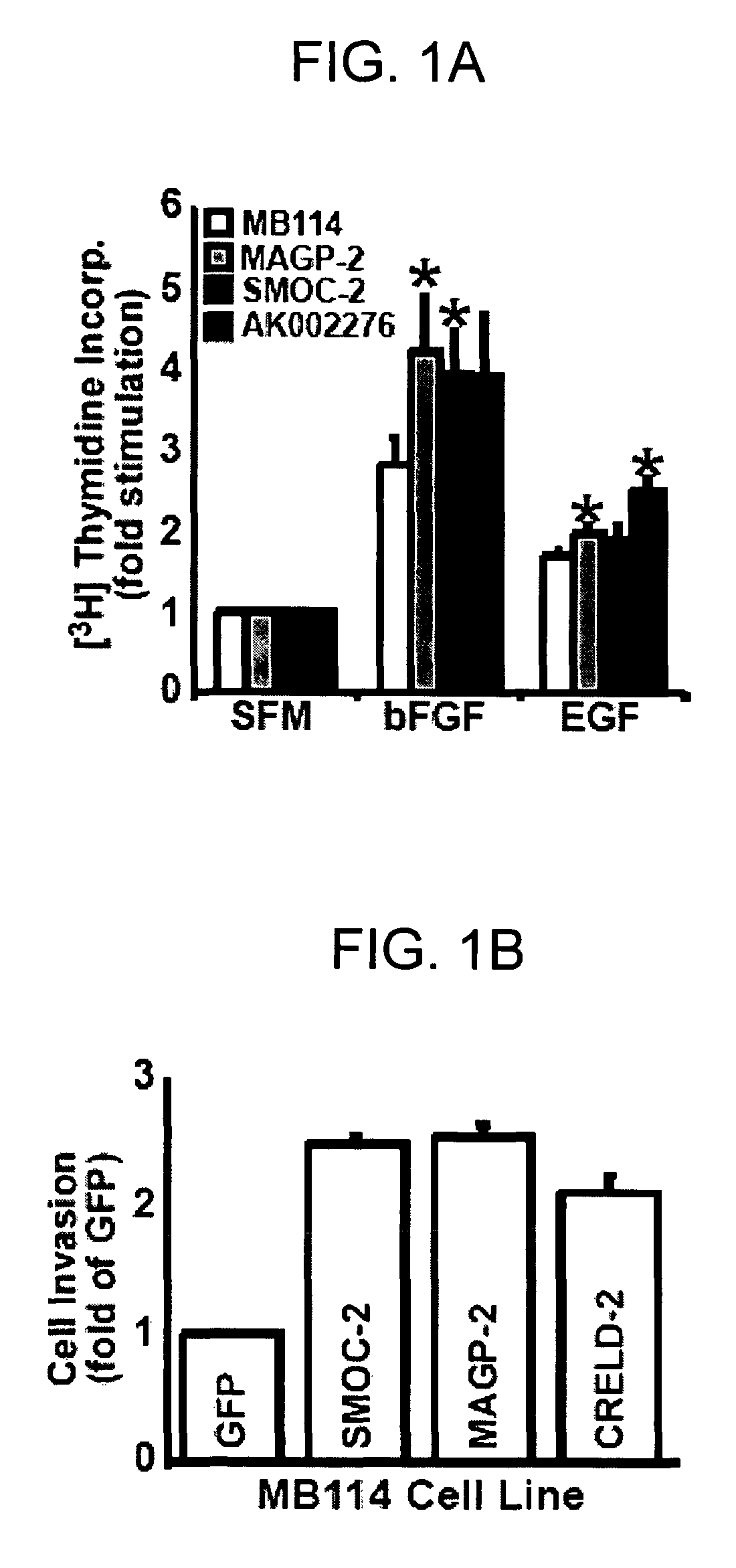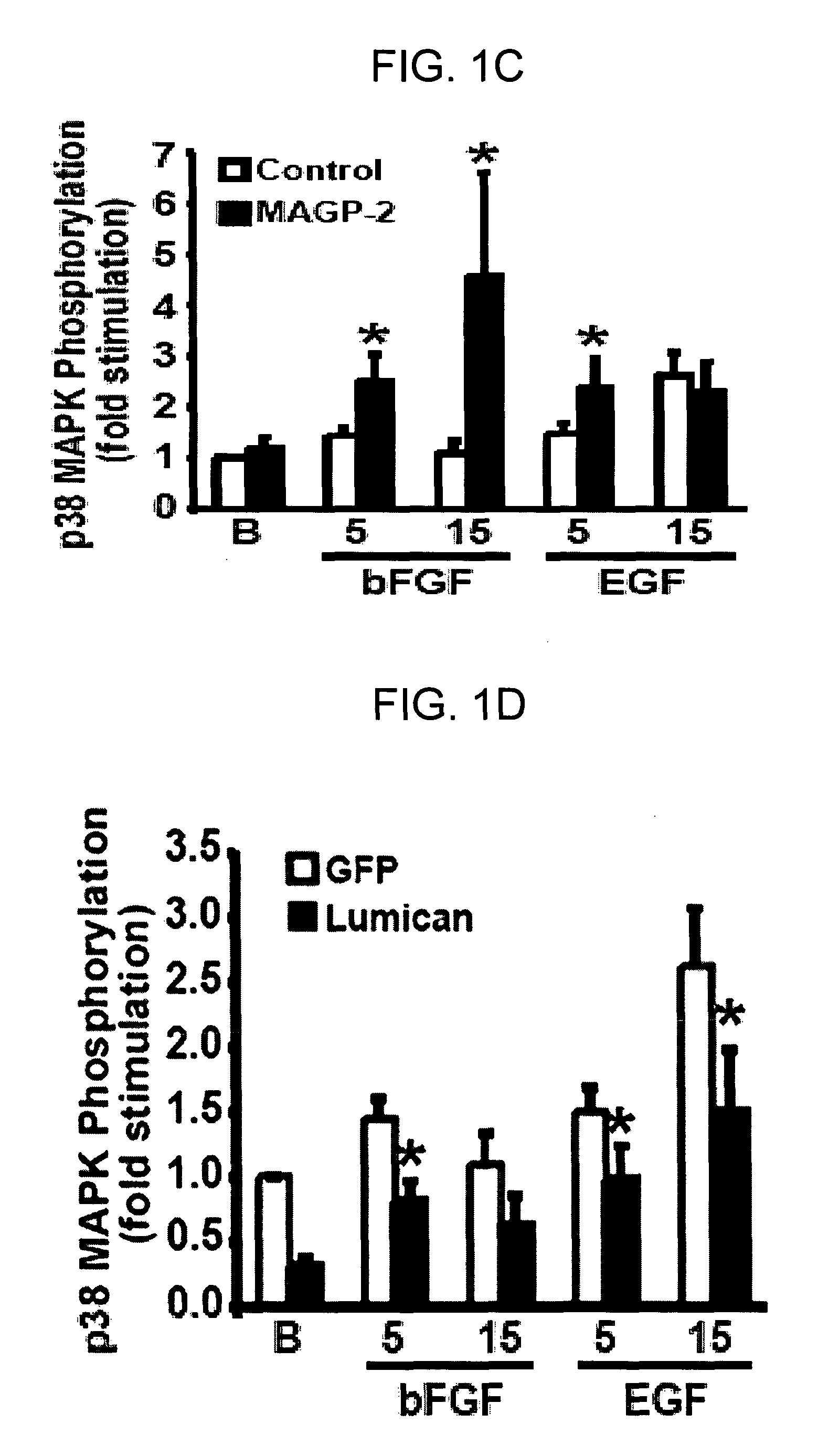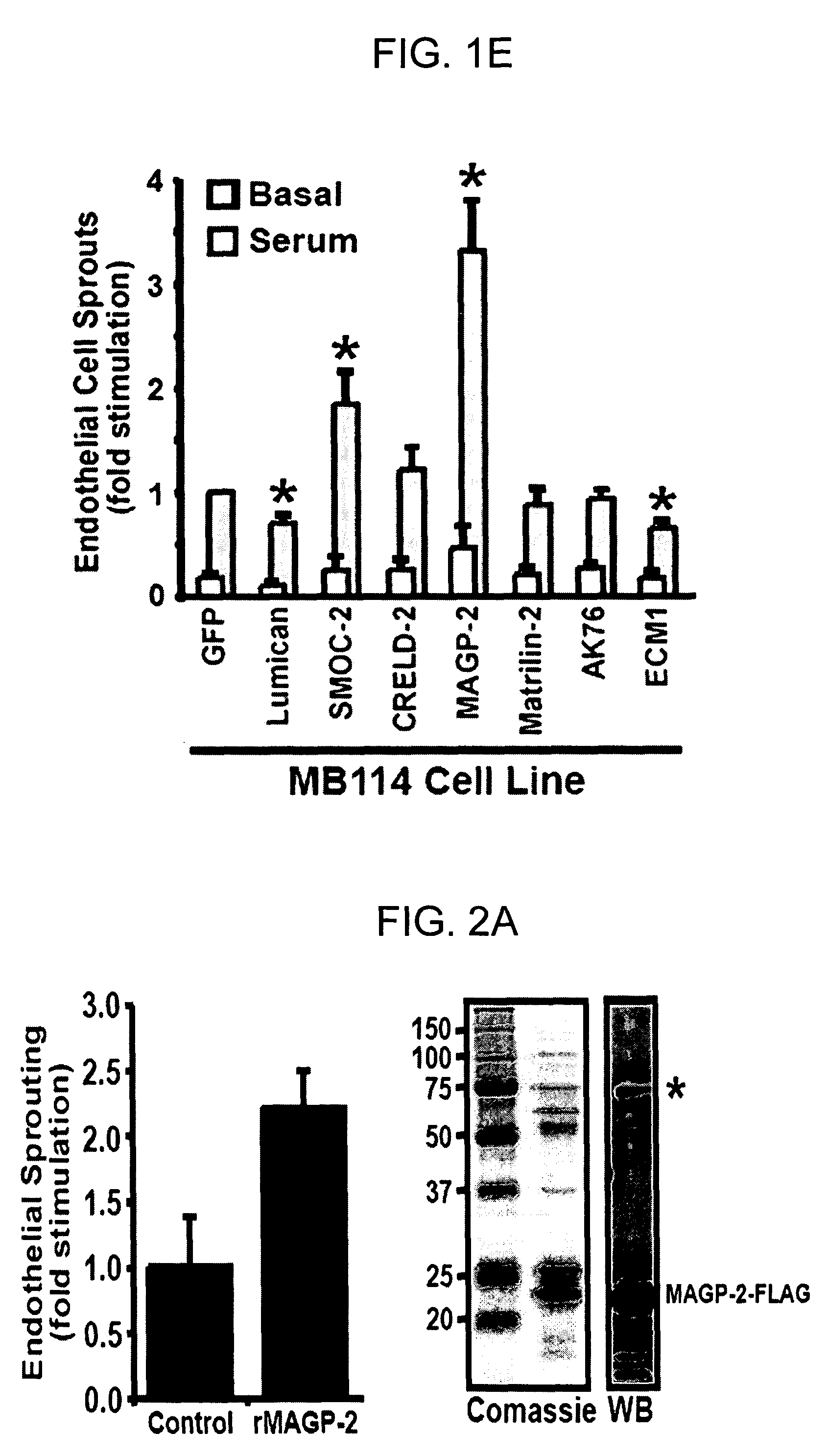Genes and proteins associated with angiogenesis and uses thereof
- Summary
- Abstract
- Description
- Claims
- Application Information
AI Technical Summary
Benefits of technology
Problems solved by technology
Method used
Image
Examples
example 1
[0307]The following example describes the identification of secretory proteins differentially expressed in tubulating ECs.
[0308]To characterize the secretome of ECs undergoing tumor-induced angiogenesis, murine brain microvascular MB114 cells were cultured on tumor-derived basement membranes (i.e., Matrigel matrices) to stimulate angiogenesis activation and the formation of capillary-like structures in vitro. MB114 cells cultured onto Matrigel matrices for 0-25 hours as indicated in FIG. 6 spontaneously reorganized into elongated, capillary-like structures, a response that was readily detected by 5 h, and one that continued to develop over the next 20 h (FIG. 6). Total RNA was isolated at various times after the initiation of tubulogenesis in MB114 cells, and subsequently was used to synthesize biotinylated cRNA probes that were hybridized to Affymetrix MOE430 GeneChips (see Materials and Methods). In doing so, 308 genes were identified whose expression in angiogenic ECs was altered...
example 2
[0313]The following example describes the effects of putative angiogenic gene expression on EC activities-coupled to angiogenesis.
[0314]The microarray analyses described in Example 1 identified numerous genes whose expression is regulated by angiogenesis, indicating that the expression of these genes is required during vessel formation. To test this hypothesis and to identify novel regulators of EC activities-coupled to angiogenesis, a series of in vitro assays was performed that modeled angiogenesis activation in ECs (Albig et al, 2006; Albig and Schiemann, 2004; Albig and Schiemann, 2005). In doing so, bicistronic retroviral transduction of MB114 cells was used to stably express six identified secretory proteins, namely matrilin-2, CRELD-2 (cysteine-rich with EGF-Like domains-2), MAGP-2, lumican, SMOC-2 (secreted modular calcium-binding protein-2), and ECM-1, (extracellular protein-1), and one putative transmembrane protein, AK002276. Immunoblotting and semi-quantitative real-time...
example 3
[0319]The following example demonstrates that MAGP-2 promotes angiogenesis in vivo.
[0320]The ability of MAGP-2 to stimulate EC activities coupled to angiogenesis in vitro indicated that MAGP-2 may function to induce vessel formation in vivo. The inventors tested this hypothesis by utilizing the Matrigel plug implantation assay, which monitors the ability of various angiogenic agents to alter vessel formation and infiltration into Matrigel plugs implanted subcutaneously into normal mice. In doing so, first, recombinant FLAG-tagged MAGP-2 (rMAGP-2) was expressed and purified from bacterial cells (FIG. 2A). More particularly, recombinant FLAG-tagged MAGP-2 (rMAGP-2) was purified from detergent-solubilized bacterial cell extracts by anti-FLAG chromatography. MAGP-2 purity was monitored by coomassie staining, and by immunoblotting with anti-FLAG M2 monoclonal antibodies (FIG. 2A; right panel). rMAGP-2 (1 μg / ml) stimulated angiogenic sprouting of quiescent MB114 cell monolayers (FIG. 2A; ...
PUM
 Login to View More
Login to View More Abstract
Description
Claims
Application Information
 Login to View More
Login to View More - R&D
- Intellectual Property
- Life Sciences
- Materials
- Tech Scout
- Unparalleled Data Quality
- Higher Quality Content
- 60% Fewer Hallucinations
Browse by: Latest US Patents, China's latest patents, Technical Efficacy Thesaurus, Application Domain, Technology Topic, Popular Technical Reports.
© 2025 PatSnap. All rights reserved.Legal|Privacy policy|Modern Slavery Act Transparency Statement|Sitemap|About US| Contact US: help@patsnap.com



